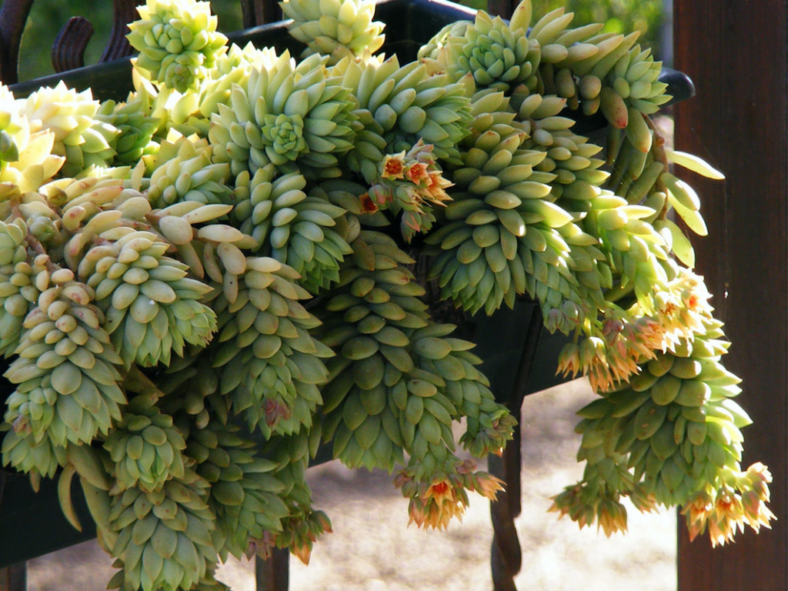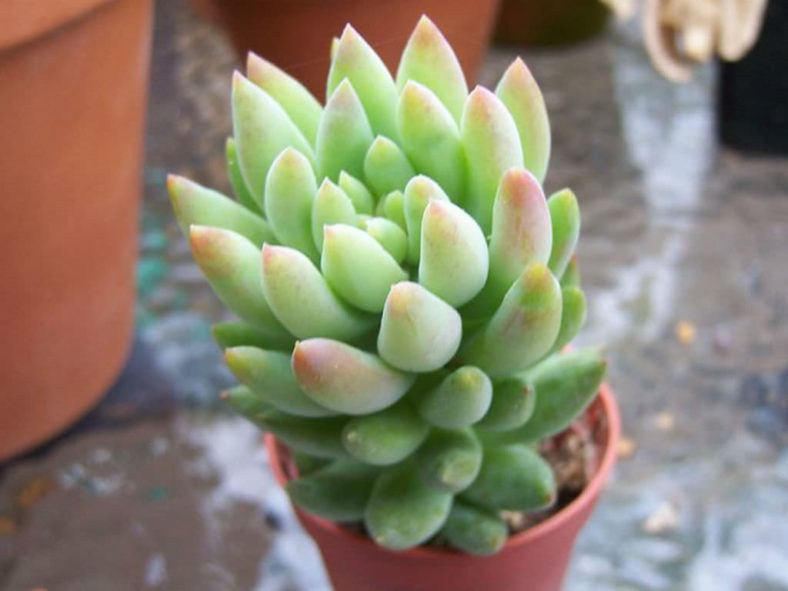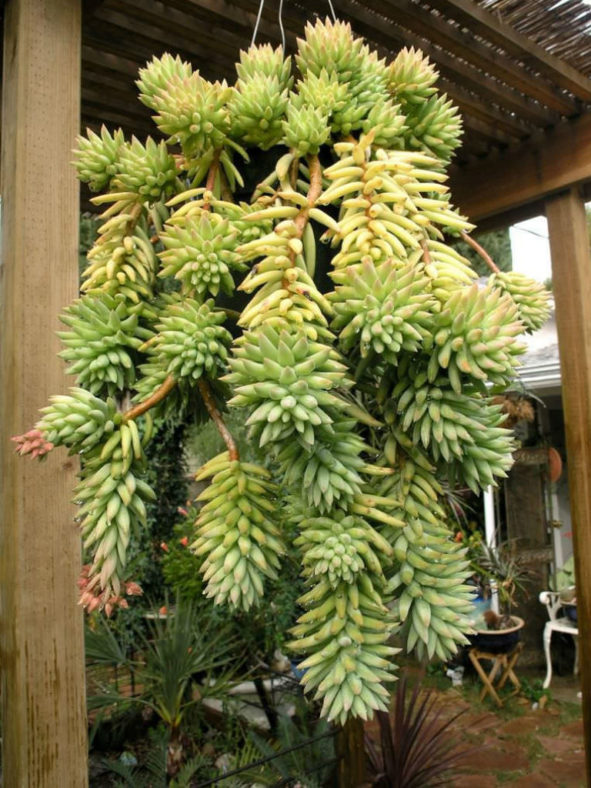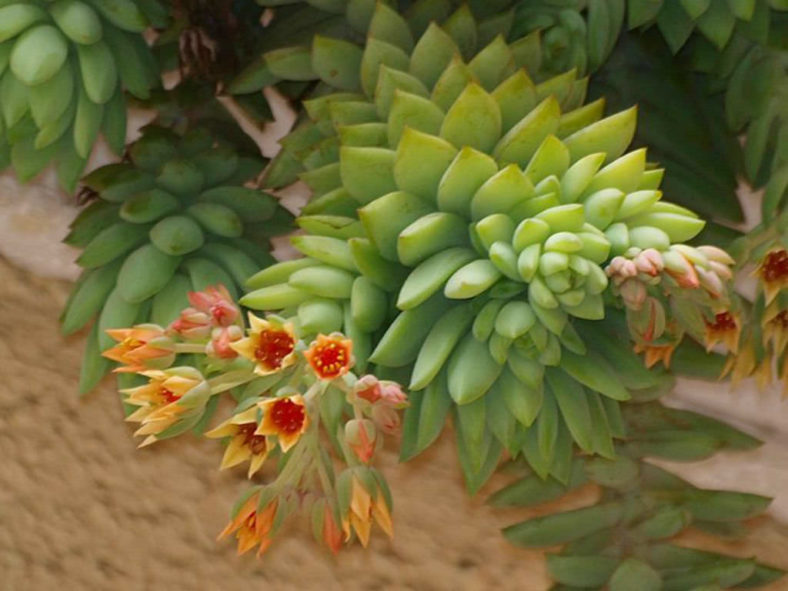Scientific Name
×Sedeveria 'Harry Butterfield'
Common Name(s)
Giant Donkey Tail, Super Burro's Tail, Super Donkey Tail
Scientific Classification
Family: Crassulaceae
Subfamily: Sempervivoideae
Tribe: Sedeae
Nothogenus: ×Sedeveria
Origin
×Sedeveria 'Harry Butterfield' is an intergeneric hybrid created by Dick Wright and results from a cross between Sedum morganianum and Echeveria derenbergii.
Description
×Sedeveria 'Harry Butterfield' is a stunning succulent with cascading stems densely packed with fleshy, teardrop-shaped, mint-green leaves covered with a powdery coating. This hybrid is larger and more robust than its parent plant, Sedum morganianum, hence its common name "Super Donkey Tail."
The stems are initially erect, becoming pendulous with age, and terminate in clusters of tubular coral flowers. There is a clone with yellowish or whitish flowers.

How to Grow and Care for ×Sedeveria 'Harry Butterfield'
Hardiness: USDA hardiness zones 9b to 11b: from 25°F (-3.9°C) to 45°F (7.2°C).
When growing Sedums, keep in mind that these plants need very little attention or care. They will thrive in conditions where many other plants thrive, but also do just as well in less hospitable areas. They are ideal for that part of your yard that receives too much sun or too little water to support the growth of other plants. A common name for Sedum is Stonecrop because many gardeners joke that only stones need less care and live longer.
Sedum is easy to propagate. For shorter varieties, simply laying the plant on the ground where you want it to grow is usually enough to get it started. The plant will send out roots from wherever the stem touches the ground and the root itself. To ensure the plant starts well, add a very thin layer of soil covering.
You can break off one of the stems for taller varieties and push it into the ground where you want to grow it. The stem will root very easily, and a new plant will be established in a season or two.
Learn more at How to Grow and Care for Sedum.
Links
- Back to nothogenus ×Sedeveria
- Succupedia: Browse succulents by Scientific Name, Common Name, Genus, Family, USDA Hardiness Zone, Origin, or cacti by Genus
Photo Gallery
Click on a photo to see a larger version.


